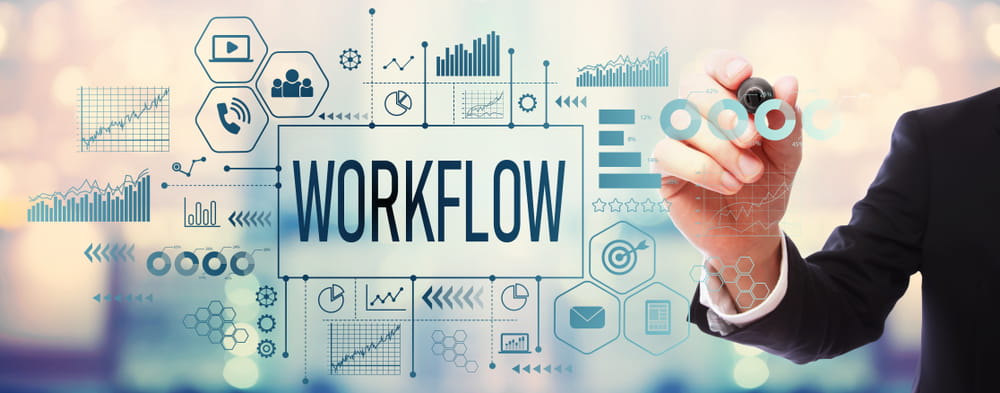How robotic process automation affects you

Big data, machine learning and artificial intelligence have all been tipped to fundamentally transform the professional services industry. But it could be the re-emergence of Robotic Process Automation (RPA) that will deliver the most tangible business results in the short- and mid-term.
Forward-thinking professional service firms are already using RPA to automate repetitive tasks such as data collection and entry, transaction analysis and even bank statement reconciliation. And that’s resulting in faster turnarounds, less human error and better profitability across the board.
What are the benefits of RPA?
An RPA bot can eliminate human error from data processing tasks to create more accurate documents and reports. They can also run 24/7 without fatigue, so your data entry and heavy-duty processing tasks can be completed outside of business hours, which will significantly increase your throughput to reduce costs and billable units to increase profitability.
This frees up your staff can be upskilled and trained on more complex and higher-value tasks, such as providing expertise to your clients, dedicating more time to building relationships, and creating space in their schedules to follow up on leads and bring more business into your firm.
Unchaining your employees from desk-based repetitive tasks will also likely improve staff morale, reduce staff turnover, and cut down the associated recruitment and training costs.
For your customers, RPA can also drastically improve your turnaround times, which means you’ll be able to provide much faster service that is even more accurate than before, contributing to your operational efficiency which can give your business a competitive advantage.

What actually is RPA?
RPA is essentially a software platform to configure bots that can automatically perform repetitive business processes that traditionally required human intervention. These bots can be embedded into your platforms like ERPs, CRMs or it can simply extract data that’s shown on your screen. For example, capturing text from digitised/scanned paper documents, transforming that into data and interpreting that data for entry into software applications.
Another example would be accounting staff that may have previously been called upon to enter data from paper invoices and bank statements into a spreadsheet or other accounting software. Now a document scanner can digitise those same paper documents and your RPA bot will recognise different types of data, use that data to populate accounting software applications, and even test or analyse that data – all without human intervention.
The real power of RPA is its’ ability to work with your current systems because it can be driven by your interface, making it platform agnostic. This means you can reduce the variable IT costs and time required to transport data from one system to another. In other words, your RPA bot can communicate with the different systems and software applications you already use in your business.
It’s the equivalent of having a 24/7 employee who can not only enter structured data into a spreadsheet, but can also ‘read’ digitised documents with character recognition to define unstructured data and understand how each data type needs to be used and which software application it should be entered into.
Why is character recognition important?
There’s one important piece of hardware you’ll need to accompany your software-based bot: a high-quality digital document scanner. This will perform the vital first step of digitising your paper documents, so the financial figures in your paper-based document becomes data a bot can use.
More specifically, your bot can then take advantage of Intelligent Character Recognition (ICR) and Optical Character Recognition (OCR), both of which have been game changers for RPA. OCR gives RPA bots the ability to ‘read’ text on digitised documents that may be received in multiple formats or contain unstructured data.
ICR adds the capability to read handwriting on digitised documents, which is important because it gives RPA bots the ability to identify and interpret data types that may be expressed differently on various document formats between clients.
For example, if your client has provided paper invoices and expense receipts that your staff needs to manually populate into an income and expenses spreadsheet. With RPA, you can scan the documents with a document scanner, then let the bot do the work. With OCR and ICR functionality, it will be able to ‘read’ the digitised documents, identify the various data types, and enter them into the corresponding data fields in the spreadsheet.
And it doesn’t stop there. The RPA bot can populate the data into your accounting software platform, generate a report and then send you an email to let you know the report is ready for you to take to your client.

The technology of today
There
To survive the competitive modern economy, professional services firms have been calling on their staff to do more with less for years. Now, there are real-world tools that actually provide your team the ability to service more clients, faster and with greater accuracy.
Get in touch to find out more about how Brother’s document scanners can be the gateway from paper to digital automation for your accounting firm.
Get in touch More About Document Management

Resource Library
Be the first to receive exclusive offers and the latest news on our products and services directly in your inbox




.jpg?h=720&iar=0&w=1920&rev=36358aeeea934b07bce65a5d230d3519)